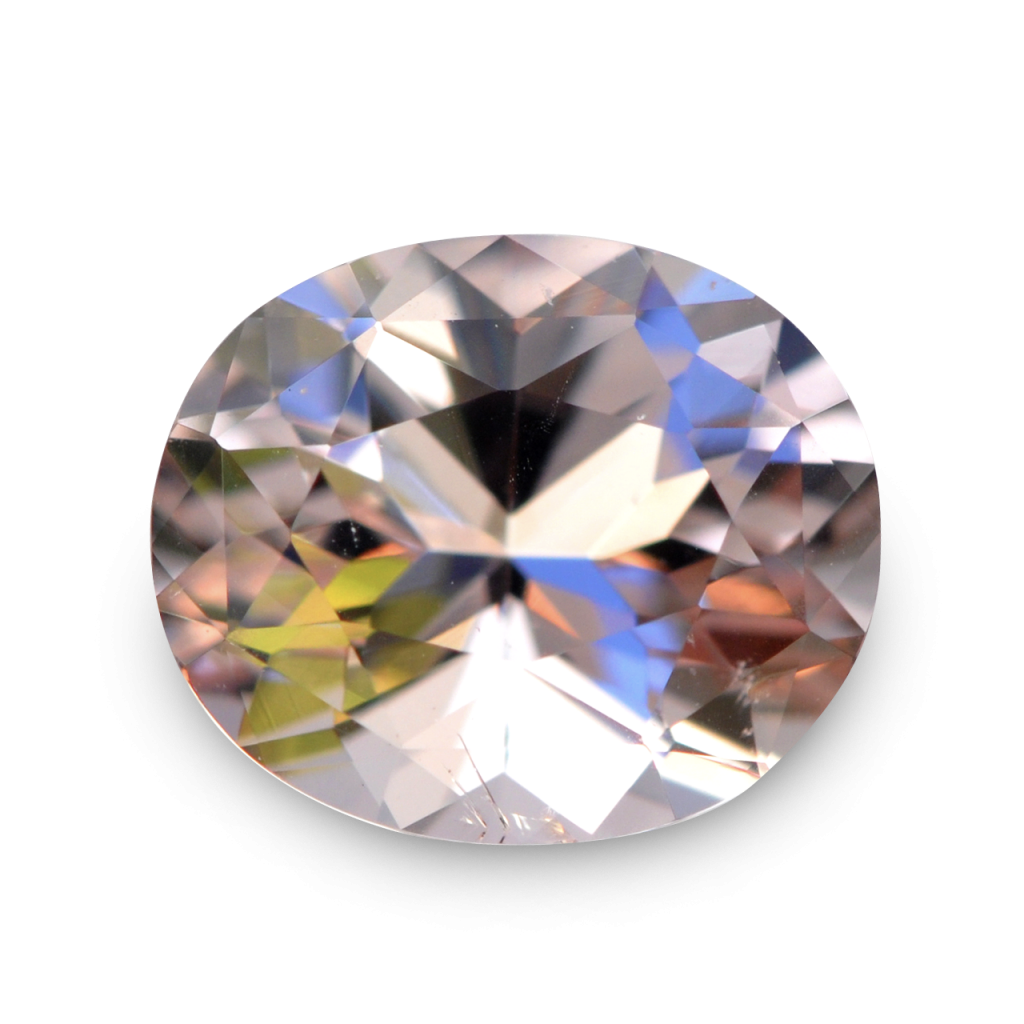
The Discovery
Morganite was founded and named by the world-famous gemologist George Frederick Kunz in honour of his good friend and avid gemstone collector, J. Pierpont Morgan. Popularly, Morgan was the founder of the now Financial Partnership Company J.P.Morgan Chase. As Kunz was undergoing an expedition in Madagascar in 1910, he discovered the rose-pink stone. His previous discovery of kunzite in 1902 came into his mind, due to the similarity of colour.
However, by using his skills as a gemologist, his discernment that this new stone is miles apart from his prior discovery was accurate. In terms of crystal systems, Morganite is hexagonal, having a uniaxial refractive index, dichroic colour and double refraction. Kunzite, in comparison, is monoclinic with a biaxial refractive index, trichroic in colour and has double refraction. Furthermore, unlike Kunzite, Morganite did not fade in colour when exposed to sunlight, making it a practical gemstone donning contemporary pieces of jewellery.
The Colours of Morganite
Despite the common misconception that the Morganite comes in only a pink colour, the stone has two dualities. The first of is the traditional light pink, the second a mixture of light pink and light orange. The cause of colour being the Mn2+ ion. This therefore means that the more Manganese ions there is the more light pink in colour the stone is. In reverse fashion, the less it is, the more of an orange tinge the stone possesses. A historical example is the “Rose of Maine”, a 30cm full piece of gem-quality Morganite. This piece was initially orange in colour and then turned a pinker shade after it was mined and had prolonged exposure to light.

Photo by Wayne Flanders, courtesy of Ronald E. Holden, Jr.
Of course nothing is black or white, or in this case pink or orange. The beauty of morganite comes from the subtle gradation between the two colours, depending on their origin and how much sunlight they have received over their lifetimes. In addition, the uniqueness of colour of each deposit from another also increases the unique beauty of this under-rated beauty. Of course, for easier visualisation we have provided our own colour palette of the colours of Morganite.

The Market for Morganite
With the apparent decrease in demand of a diamond as a centre stone, and the rise of coloured gemstones, the Morganite is a pioneer for the light pink colour. This is due to the abundance of diamond rings and diamond jewellery. Subsequently, young adults and millennials alike are now deviating to a more unique approach to jewellery.
It was this gorgeous diamond ring that I had seen all over the place, and it was so stunning. But, I was like, ‘Well, crap.’
Moriah Robinson, a young adult featured on Vox, concerning her choice to purchase a Morganite engagement ring..
Furthermore, the presence of colour and the comparative size which people could purchase a morganite in place of a diamond is an absolute advantage. With a morganite selling at approximately $400 a carat, compared to a diamond which of a similar colour has a market value of $2,000 a carat. Therefore, the ‘cost-mindful’ younger generation have a higher chance to purchase a morganite rather than a diamond. Morganites are popularly available in larger sizes than diamonds. This allows those who purchase a morganite get more volume for value, including the status of owning a semi-precious gemstone.
The Natural Morganite
Of course, natural gemstones have slight inclusions which indicate their natural origin. Being from the beryl gemstone family, Morganite’s inclusions are similar to other gemstones in the family, such as aquamarine and emerald. All three have characteristic inclusions such as hollow growth tubes, two phase inclusions and mineral inclusions.

The inclusions not only indicate that the stone is natural, but also adds character to the gemstone. However, it is important to recognise that the lack of inclusions in a gemstone does not indicate synthetic. The trilliant cut Morganite below is a close enough testament to this. The stone above and the stone below are from the same deposit and were right next to each other. Also note that these inclusions are unavailable to the naked eye, but are visible to a 10x magnification hand lens, or in some cases a 30x magnification camera lens

Conclusion
Conclusively, Morganites are a beautiful coloured stone alternative which for any piece of diamond jewellery. Supporting a light pink to orange colour, Morganites speak to the wanderer looking for a unique gemstone; a gemstone which sets them apart from the crowd. With it’s recent increase in popularity, this gemstone’s beauty speaks for itself. In the correct piece of jewellery this beauty impresses everyone, so go forth and purchase a morganite for yourself.
References:
Flanders, W 1989, The Rose of Maine, Photograph, Maine.gov, viewed 11 August 2019, <https://www.maine.gov/dacf/mgs/explore/minerals/guide/chapter5/bennett-3.jpg>.
Keiles, J 2018, The engagement ring gemstone that everyone is buying but nobody is talking about, Vox, viewed 11 August 2019, <https://www.vox.com/the-goods/2018/12/4/18126188/morganite-engagement-ring-gemstone-diamond-alternative>.